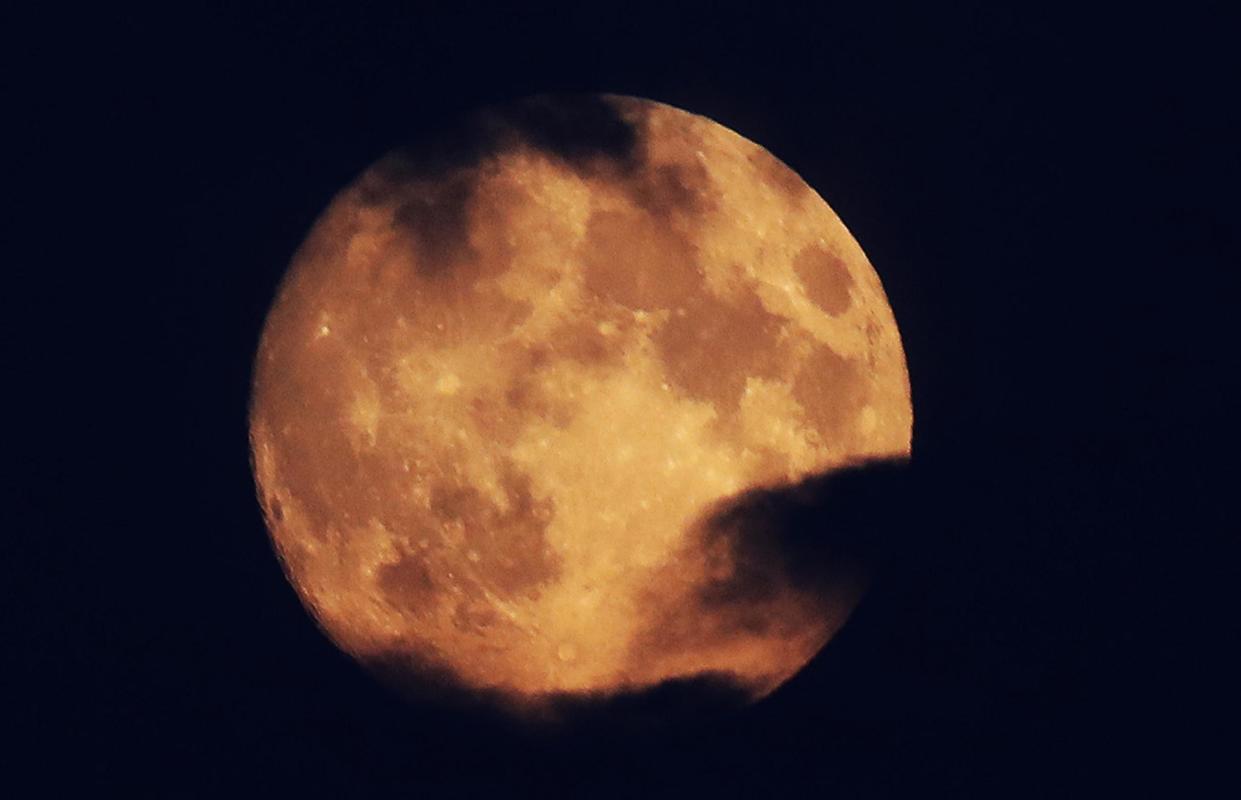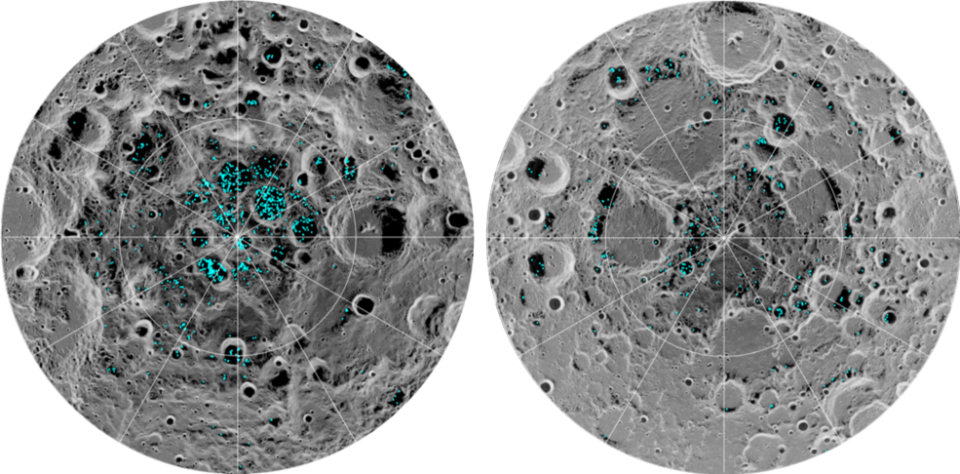NASA scientists discover first evidence of ice on the moon

Astronomers have discovered "definitive evidence" that there is ice at the poles of the moon.
The existence of water on the otherwise barren satellite has boosted hope of space colonisation - with access to the necessary resources to support life in a potential lunar base.
Researchers at the University of Hawaii, working with colleagues at NASA, announced they have found the first direct evidence of frozen water at the Moon’s poles based on NASA's Mineral Mineralogy Mapper, which collected data in 2008.
And after a decade of study, patches of ice were found to be mixed in with the rock on certain craters at the north and south poles of our closest celestial body.

On a 1994 mission, the NASA spacecraft Clementine previously brought back data which suggested there was ice on the surface of the moon - but the measurements weren't definitive and found various combination of hydrogen and oxygen atoms. The latest discovery, published by the natural Academy of Sciences on Monday, is the first discovery of frozen water molecules on the surface.
How scientists found water on Earth's closest neighbour
NASA’s Moon Mineralogy Mapper (M3) instrument, aboard the Chandrayaan-1 spacecraft, launched in 2008 by the Indian Space Research Organization. It collected data on the reflective properties of different elements and combined it with exploratory data from previous missions to the moon, and used infra-red light to tell the difference between water vapour and solid ice.
NASA announced on their website: "In the darkest and coldest parts of its polar regions, a team of scientists has directly observed definitive evidence of water ice on the Moon’s surface. These ice deposits are patchily distributed and could possibly be ancient. At the southern pole, most of the ice is concentrated at lunar craters, while the northern pole’s ice is more widely, but sparsely spread.
"Most of the newfound water ice lies in the shadows of craters near the poles, where the warmest temperatures never reach above -250 degrees Fahrenheit. Because of the very small tilt of the moon’s rotation axis, sunlight never reaches these regions."
Shuai Li, who led the team of researches from the University of Hawaii and Brown University has said in a statement that it is difficult to determine where the ice came from, but water may have arrived as comets smashing into the moon over aeons.

 Yahoo News
Yahoo News 
